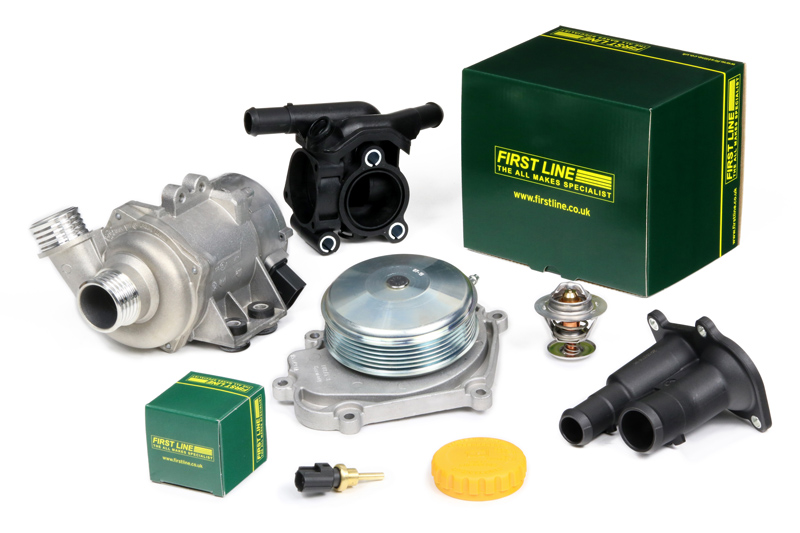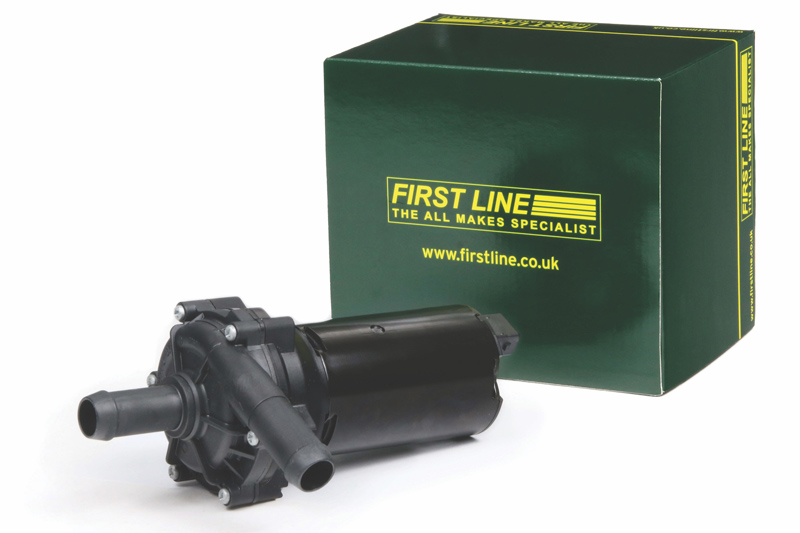
First Line offers some words of advice for technicians undertaking repair work on the auxiliary pump on the Mk III Land Rover Range Rover and Range Rover Sport.
The thermal management system, in common with many of the systems in the contemporary motor vehicle, is an incredibly complicated and inter-connected element within the overall design package. Ensuring the engine warms up quickly and evenly helps to control the vehicle’s emissions, while effective thermal management keeps the engine working within its optimum operating window, which contributes to its long-term health.
At the heart of the system is the water pump, and while many are still mechanically driven, there is a marked increase in the use of electric pumps, particularly in applications utilising more than one pump in the cooling circuit. Keeping abreast of these changes and being equipped with both the replacement products required and the technical knowledge needed to correctly service and repair cooling systems is vital for the independent workshop.
Due to their complex design, the root cause of a problem with the thermal management system is not always obvious, so alongside general advice concerning matters such as water pump installation, First Line provides specific guidance that has been gained through years of thermal management experience and product development.
An excellent example of this guidance is in relation to the auxiliary pump on the Mk III Land Rover Range Rover and Range Rover Sport. Due to an OE design fault, the wires on the electrical connector that provide the power to the auxiliary pump that cools the supercharger may have been wired the wrong way round, which causes it to run backwards.
Although the supercharger is still being cooled, the pump is clearly not operating as efficiently as it should and over time the pump will fail, which means the vehicle will run poorly, often losing power under load and misfiring. In addition, it can bring up one or both P0096/P2601 fault codes.
To overcome the issue, the wires going into the connector (C3006) will need to be rewired to the correct orientation. For the Range Rover, the brown wire in cavity one needs to be connected to ‘-’ on the pump connection, and the red and white wire in cavity two needs to be connected to ‘+’ on the pump connection. However, for the Sport, the black wire in cavity one needs to be connected to ‘-’ on the pump connection, and the brown and purple wire in cavity two needs to be connected to ‘+’ on the pump connection. Naturally, if the pump has been operating in reverse, even if it has not yet failed, it is recommended that it is replaced.









